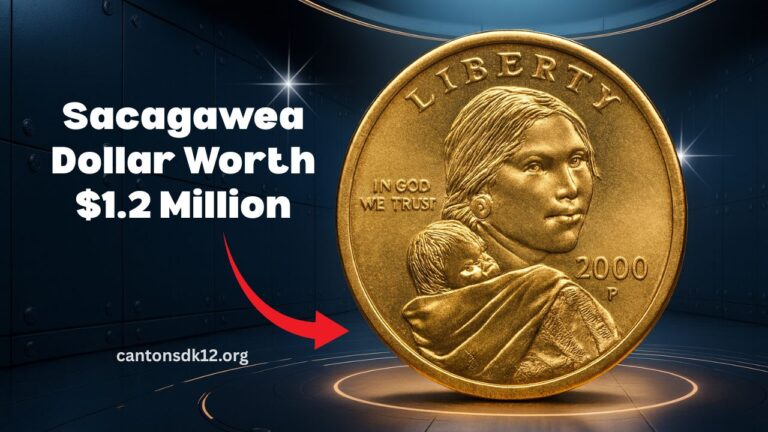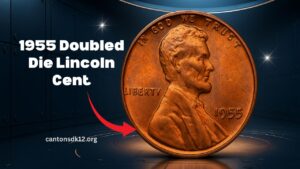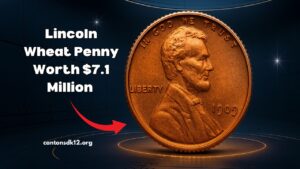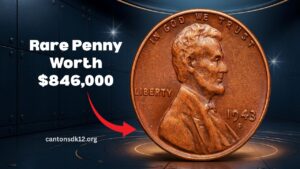Headlines about a “$1.2 million Sacagawea Dollar” flood social feeds every few months. They’re eye-catching—but misleading.
While certain Sacagawea Dollar errors have sold for six figures, there is no verified public auction at $1.2 million.
The truth is still exciting: a few ultra-rare types can bring well into the hundreds of thousands when authenticated and high-grade.
What actually sells for big money
The most valuable Sacagawea pieces are dramatic mule errors—coins struck with the Washington quarter obverse paired with the Sacagawea reverse (both dated 2000 and minted in Philadelphia).
Multiple examples are known, and top-graded pieces have sold at public auction for around $150,000–$194,000.
Other valuable varieties include the “Cheerios Dollar” (a special early pattern reverse placed in 2000 cereal promos) and the “Wounded Eagle” die-gouge variety. These typically sell for thousands, not millions.
Quick ID guide: could yours be special?
- Mule error (2000-P): One side shows George Washington (a quarter obverse); the other shows the Sacagawea eagle reverse. Weight and color match a dollar, not a quarter.
- Cheerios Dollar (2000-P, FS-902/FS-901): Look for extra-sharply detailed tail feathers on the eagle. Many were packaged in a Cheerios card—but some surfaced loose.
- “Wounded Eagle” (2000-P): A vertical gouge through the eagle’s body (looks like a spear).
- Goodacre Presentation strikes (2000-P): Special finish dollars paid to designer Glenna Goodacre; often sold with provenance and premium packaging.
Tip: Values hinge on authenticity, variety, and grade. If you suspect a rarity, avoid cleaning and have it authenticated by a major grading service.
Rarest Sacagawea Dollars: recent, verified price ranges
| Type / Variety | Key Features | Recent Verified Market Range | Notes |
|---|---|---|---|
| 2000-P Sacagawea/Quarter Mule | Washington quarter obverse + Sacagawea reverse on dollar planchet | ~$150,000–$194,000 (public records) | Among the most valuable modern U.S. error coins |
| 2000-P “Cheerios Dollar” (pattern reverse) | Sharply detailed eagle tail feathers; often in Cheerios packaging | About $3,000–$12,000+ (grade-dependent); historic record about $29,900 | Scarce; ID relies on reverse detail |
| 2000-P “Wounded Eagle” | Die gouge through eagle’s body | Up to ~$7,000 in top grades | Affordable entry among rarities |
| Goodacre Presentation (2000-P) | Special finish; designer payment pieces | Hundreds to a few thousand | Value depends on packaging/provenance |
| 2000-W 22-karat gold patterns | Experimental gold strikes; not in circulation | Not for sale (held by government) | Historic patterns housed at Fort Knox |
So…is there a $1.2 million Sacagawea Dollar?
Short answer: No verified public sale supports that number. The headline-worthy coin is the 2000-P mule, and its confirmed public auction records are in the high-five-figure to low-six-figure range.
That’s still a hidden fortune compared to face value—but not $1.2 million.
How to check yours (fast checklist)
- Design mismatch? Quarter front, dollar back → investigate mule.
- Feather detail? Unusually bold tail feathers → check for Cheerios Dollar.
- Raised line through eagle? Possible Wounded Eagle variety.
- Don’t clean. Submit to PCGS/NGC for authentication and grading.
- Keep provenance. Original packaging or documented history can boost value.
The Sacagawea Dollar can indeed hide a small fortune, but only in specific, authenticated varieties—especially the 2000-P mule and scarce pattern/variety issues.
If your coin shows the quarter obverse, extra-bold tail feathers, or a “wounded” eagle, skip cleaning and get it professionally certified. That’s the difference between one dollar and five or six figures.
FAQs
Are mule Sacagawea Dollars still being found?
Rarely, but yes—occasional discoveries still surface. Most known pieces are already in collections or graded holders.
Do plain 2000-P or 2000-D Sacagawea Dollars have big value?
Circulated common issues typically bring face value. Only error/variety or exceptional graded examples command premiums.
What increases value the most?
Rarity of the variety, top condition (MS/PR 66–68+), and third-party certification have the largest impact on sale price.




